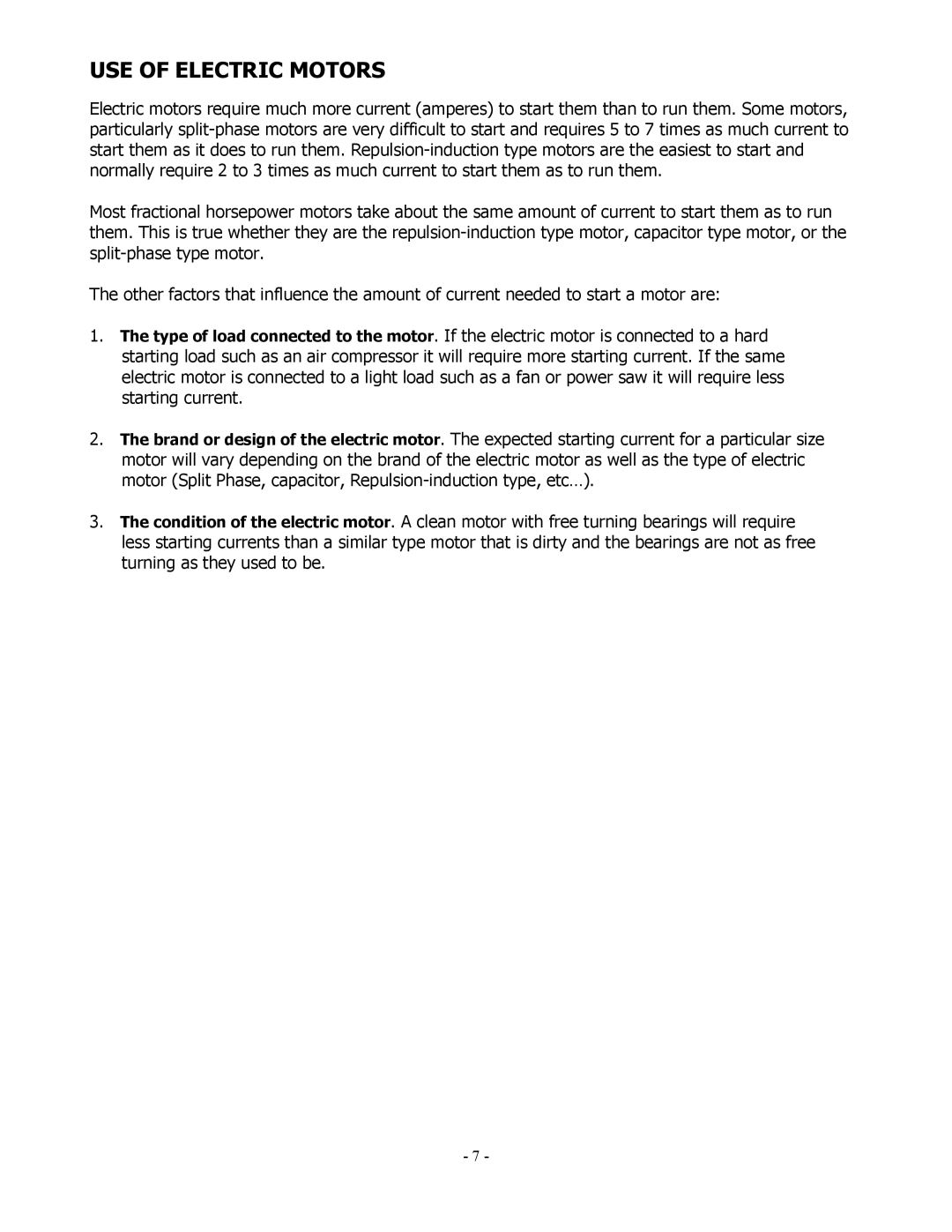USE OF ELECTRIC MOTORS
Electric motors require much more current (amperes) to start them than to run them. Some motors, particularly
Most fractional horsepower motors take about the same amount of current to start them as to run them. This is true whether they are the
The other factors that influence the amount of current needed to start a motor are:
1.The type of load connected to the motor. If the electric motor is connected to a hard starting load such as an air compressor it will require more starting current. If the same electric motor is connected to a light load such as a fan or power saw it will require less starting current.
2.The brand or design of the electric motor. The expected starting current for a particular size motor will vary depending on the brand of the electric motor as well as the type of electric motor (Split Phase, capacitor,
3.The condition of the electric motor. A clean motor with free turning bearings will require less starting currents than a similar type motor that is dirty and the bearings are not as free turning as they used to be.
- 7 -
